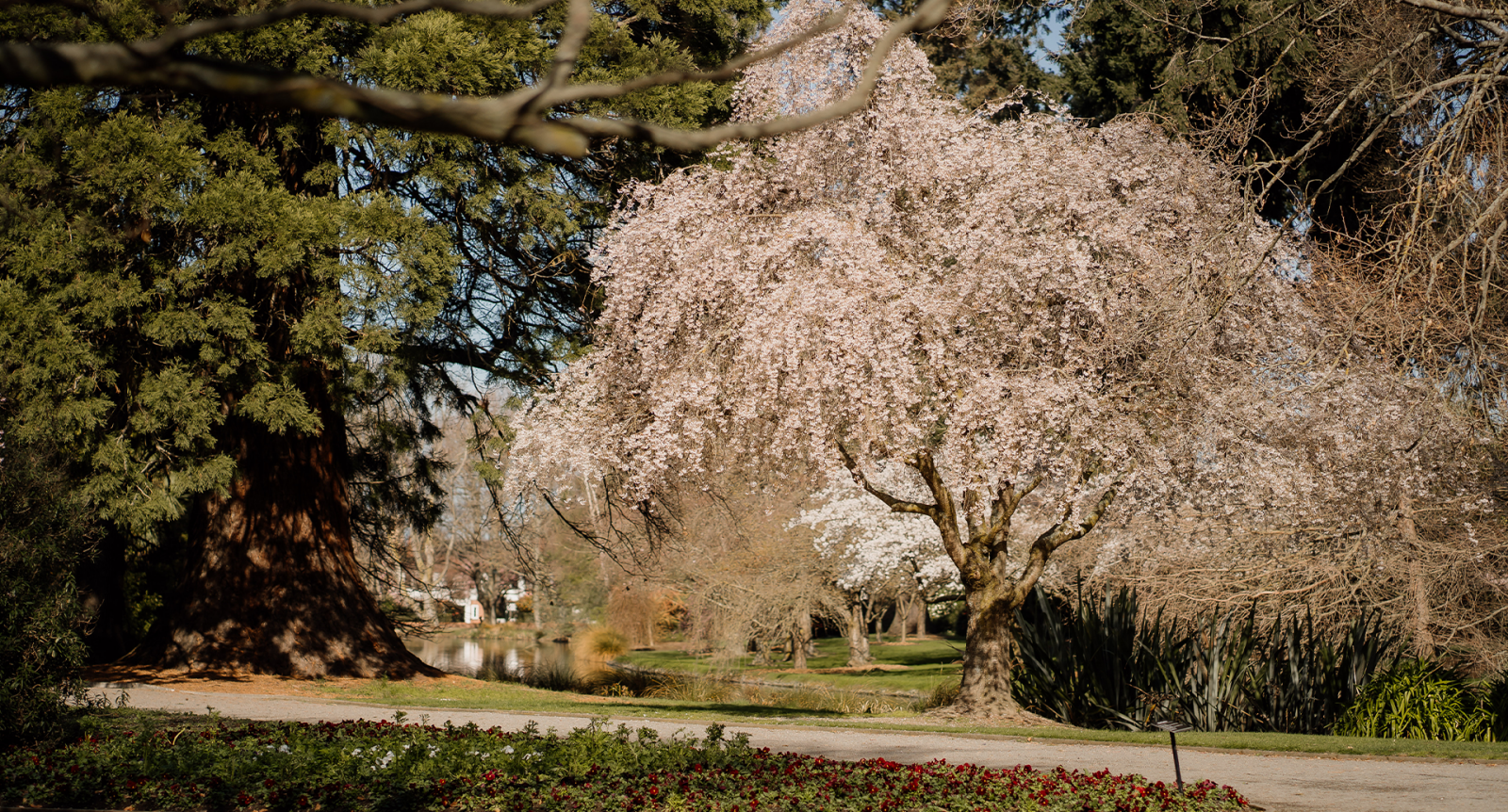Notable Trees
The Canterbury Plains are a very flat area, mature trees are vital to enhance its appeal. A lot of the Ashburton landscape originates from its individual mature trees and groups of trees. It is important therefore to protect our trees from indiscriminate or unnecessary damage or removal.
The majority of heritage and notable trees appear with the Ashburton Township with some in Barrhill, Rakaia and Methven, however there are also restrictions on clearing indigenous vegetation both on Private Land (particularly in rural areas) and on road verges which you might require consent for. For further information, please see section 3.9.11 of the District Plan or contact the Council at info@adc.govt.nz at an early stage.
Please note that the vegetation clearance rules are separate to the Heritage Tree provisions referred to below which are considered within Chapter 12 of the District Plan.
Memorial Trees
A significant number of trees have been planted in various parks reserves and public areas to commemorate special events.
The events include visits by Royalty, Heads of State and other dignitaries. Trees were also planted to commemorate international, national and local events and persons, as well as anniversaries for community and other occasions for formal recognition. As time passes these trees adopt historic significance e.g., record of past events or persons. Most of the commemorative plantings have plaques installed at the base of the tree.
Trees Protected Under The District Plan
There are responsibilities associated with protected trees that owners should be aware of. You may want to speak to your lawyer about this.
The Council holds, in its District Plan, a list of protected trees which it reviews periodically. These trees have special characteristics which are considered to be of value to the community beyond the site itself. These trees are held in an appendix to Section 12 of the District Plan.
Generally only trees that are long lived, healthy and do not cause problems or are undamaged are considered to be put on the list of heritage trees. Other criteria that can result in trees having a lesser level of protection are trees that have been cut back at some stage of their lives are misshapen or are a common species to the town.
Protected trees are classified based on the following three categories:-
- Historical significance
- Scientific significance
- Landmark significance
Historical significance means that the tree has been planted by an early known settler or group of settlers of Ashburton and is of such importance to the history of the district that it should remain for the life of the tree.
Scientific significance means that the tree is either one that is generally rarely seen in cultivation, or is an exceptional example of a more common species. Such examples do not necessarily have to be large specimens but of such rarity or so outstanding that their preservation is of the greatest importance.
Landmark significance means that the tree is of such dimensions and significance that its removal would cause irreplaceable loss to the skyline landscape of the district.
Removing or Working with Protected Trees
There are responsibilities associated with protected trees that owners should be aware of. You may want to speak to your lawyer about this.
Chapter 12 of the District Plan details what you can do with a protected tree without needing the consent from the Council.
If you want to remove a tree or have it removed from the List:
- You can wait for the District Plan review cycle and make a submission that the tree is not worth listing
- You can apply for a plan change to have the tree removed (although this can be a costly and time consuming process)
- You can apply for resource consent for permission to remove the tree.
In all of these situations you would have to prove that the tree has lost the values that it had when it was listed, that it has become so dangerous that it is a threat to lives or property or for some other strong reason. The costs for this fall on the applicant.
If you are only needing to trim or work near a protected tree, we suggest you speak to either the Planning Department or the Open Spaces Team here at the Council first. Sometimes you don't need consent to do works, and sometimes we can even help by doing it for you!
